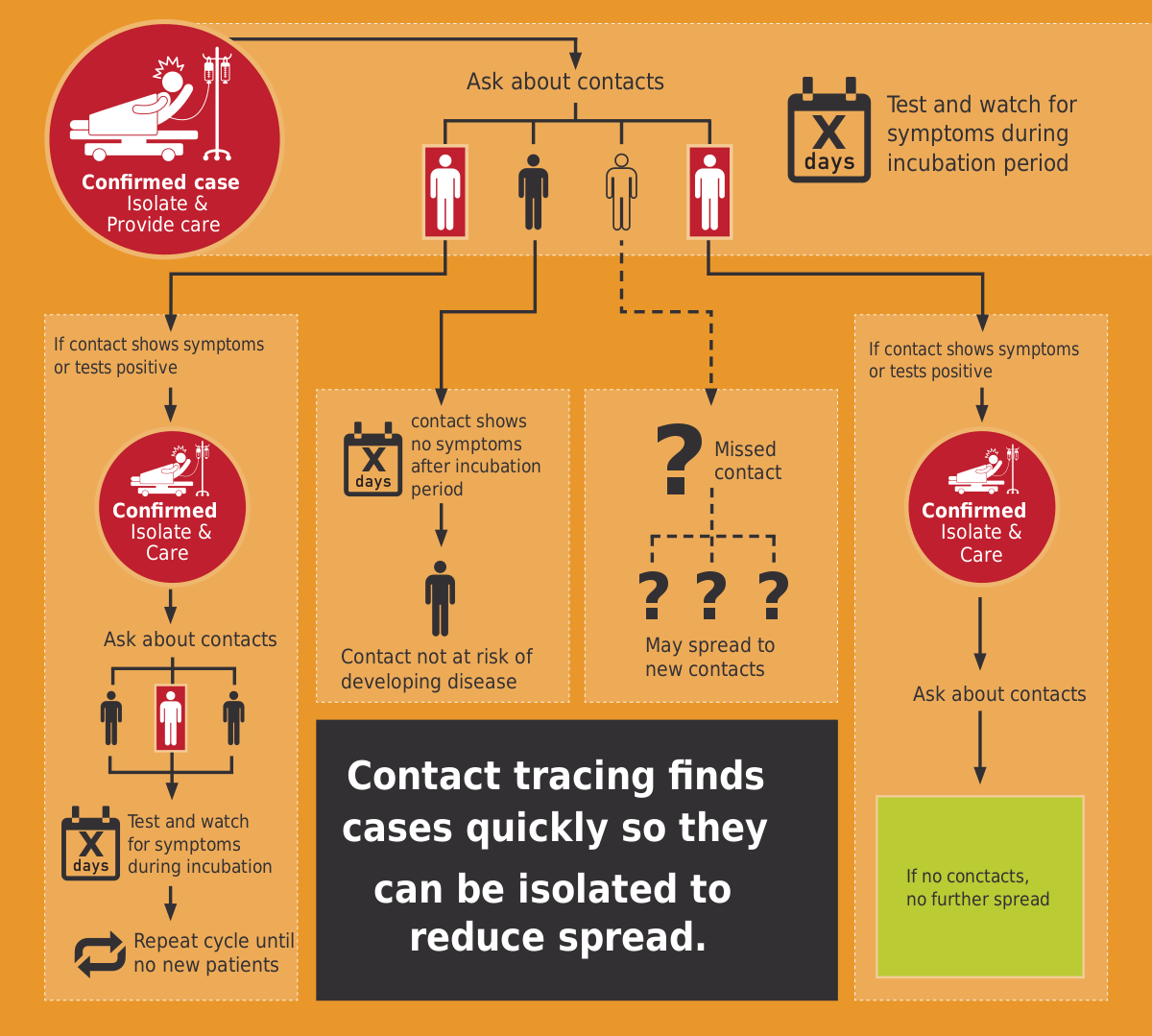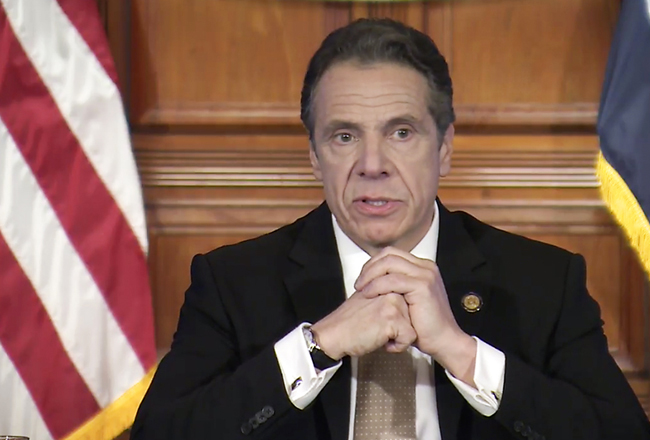The state is ramping up its “track and trace” strategy to get a better handle on its number of COVID-19 infections and exposures, Gov. Ned Lamont announced today ”“ a move that will play a key role in Connecticut”™s reopening strategy.
 Kristen Soto, Syndromic Surveillance Coordinator for the Connecticut Department of Public Health, said the program ”“ dubbed “ContaCT” ”“ has been developed in conjunction with Microsoft. The system should be in place by next week, she said, followed by a week”™s worth of training for DPH and municipality public health departments, with a rollout likely in the third week of May.
Kristen Soto, Syndromic Surveillance Coordinator for the Connecticut Department of Public Health, said the program ”“ dubbed “ContaCT” ”“ has been developed in conjunction with Microsoft. The system should be in place by next week, she said, followed by a week”™s worth of training for DPH and municipality public health departments, with a rollout likely in the third week of May.
The program involves contacting anyone who has tested positive for the disease via text, email or phone and asking if they would like to opt in to the system. They will then be asked for a list of people they had 10 minutes of contact with ”“ even at the recommended six-foot distance ”“ to determine who else may have been exposed.
Those people will in turn be contacted. The approach has worked well in the past with measles, Soto said.
Lamont admitted that it “sounds a little like Big Brother,” but repeated that the interviews will be done on a voluntary basis.
“The goal is to reach every case,” said Dr. Matthew Cartter, state epidemiologist and director of infectious diseases for the DPH, acknowledging that not everyone will participate.
Soto said that 300 people are already involved with learning the testing system, and that DPH is looking to recruit another 400 to 500 volunteers from academic institutions.
Encouraging trends continue
Connecticut conducted another 1,999 tests over the past 24 hours, netting 315 positives, for respective totals of 92,745 and 26,312. Hospitalizations were down by 26 to 1,732, while another 77 deaths brought that total to 2,089.
Lamont noted the number of positive cases was “the lowest we”™ve had in weeks,” and that hospitals are now operating at about two-thirds capacity, with ICUs having “even more” beds available.
In Fairfield County, another 111 positive cases were recorded, bringing that number to 10,763; hospitalizations were down by 7 to 620; and deaths increased by 20 to 747.
Stamford still has the most positive COVID-19 cases in the state, with 2,337, followed by Bridgeport (1,838), New Haven (1,502), Norwalk (1,456), Danbury (1,332), Waterbury (1,213), Hartford (943), West Haven (692), Greenwich (661), Hamden (568) and Stratford (520).
Cartter said that Connecticut is “at the peak right now,” and that he expects the numbers of positive cases to start to decrease between mid- and late May.
The current trends “are encouraging,” he said. “But we should not think that we are through this at this point in time,” due to the still-increasing positive cases and deaths. “We still have a ways to go.”
The state is conducting about 4,000 tests a week, Cartter said ”“ a number that should be about 50,000 a week by the end of May. Laboratory testing capacity has increased more quickly than the ability to get samples for testing, he noted, with the nationwide shortage of swabs and other equipment.
Reopening, unemployment info
As for some criticism that the activities of the Reopen Connecticut Advisory Group are not subject to the Freedom of Information Act, Lamont insisted that regular reports will take place in public, with the next update scheduled for this Thursday”™s briefing. Noting that many of the advisory group”™s members are working “16- to 18-hour days,” the governor insisted that co-chairs Indra Nooyi and Dr. Albert Ko “will answer every question you”™ve got on Thursday.”
Lamont further said that the state Department of Labor has issued about $330 million to unemployment claimants, which will “inject some money into the economy and hopefully inject some confidence into the economy.”
Some 439,000 people have now applied for unemployment, he said, which makes for a state unemployment rate “north of 20%, the likes of which we haven”™t seen since the Great Depression.”
That fact will be short-lived, he predicted.
D.C. DEVELOPMENTS
As the U.S. passed 1 million COVID-19 cases today, Dr. Anthony Fauci, director of the National Institute of Allergy and Infectious Diseases, said today that he was “cautiously optimistic” that a coronavirus vaccine could be found over the winter.
 “Hopefully by the time we get to this coming winter, we will know whether or not we have a safe and effective vaccine,” Fauci said during an appearance before the Economic Club of Washington.
“Hopefully by the time we get to this coming winter, we will know whether or not we have a safe and effective vaccine,” Fauci said during an appearance before the Economic Club of Washington.
Fauci said he was still operating under the belief, which he voiced earlier this month, that a vaccine could take 12 to 18 months to develop, test and approve for widespread use on humans.
“Hopefully by that time we get to this coming winter, we will know whether we have a safe and effective vaccine,” he said. “The challenge would then be to scale it up.”
Either way, he said, COVID-19 “is not going to disappear from the planet, which means as we get into next season, in my mind, it”™s inevitable that we will have a return of the virus.”
Trump: Stop griping about tests
Having unveiled state guidelines on coronavirus testing yesterday, President Donald Trump took to Twitter to declare: “We are doing far more, and better, Testing than any other country in the world, and yet the media does nothing but complain. No matter how good a job is done, the same as with the Ventilators, they will never say we are doing a great job, they will only viciously gripe!”
The “gripers” include U.S. Sen. Patty Murray (D-Washington), who said the blueprint “does nothing new” and “will accomplish nothing new,” as it lacks the specificity and details needed for an effective approach.
Also griping was Senate Minority Leader Chuck Schumer (D-New York), who dismissed the plan as “pathetic. It didn’t have any details. And then at the end, it said let the states do it.”
Schumer, appearing this morning on MSNBC, said he plans to send a letter to Senate Majority Leader Mitch McConnell (R-Kentucky) asking to establish oversight hearings when the Senate reconvenes at the Capitol next week. Those hearings would involve calling members of the White House coronavirus task force and the Trump administration as witnesses.
“No one in the administration has given an answer specifically as to how the states should do it, and that’s one of the reasons I think we need to get the hearings,” Schumer said.
The numbers
As of this writing, there are more than 1 million positive cases and nearly 58,000 virus-related deaths in the U.S., with over 117,000 recovered. Globally, there are almost 3.1 million positive cases and over 215,000 deaths, with more than 916,000 recovered.






















